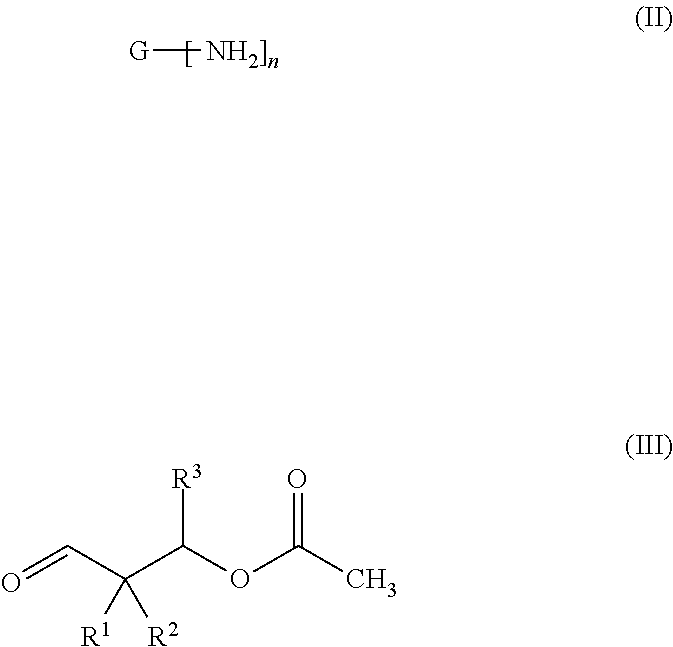Liquid-applied waterproofing membrane for roofs
a waterproofing membrane and liquid-applied technology, applied in the direction of build-up roofs, coatings, polyurea/polyurethane coatings, etc., can solve the problems of slow curing, unpleasant odours, and difficulty in curing defects, and achieve low solvent content, good workability, and good shelf life stability
- Summary
- Abstract
- Description
- Claims
- Application Information
AI Technical Summary
Benefits of technology
Problems solved by technology
Method used
Image
Examples
examples
[0195]“Normal climate” means a temperature of 23±1° C. and a relative atmospheric moisture of 50±5%.
[0196]Preparation of Aldimines:
[0197]The amine content (total content of free amines and blocked amines, i.e. aldimino groups) of the prepared aldimines was determined by titration (with 0.1 N HClO4 in acetic acid against cristal violet) and is given in mmol N / g.
Aldimine-A1: N,N′-Bis(2,2-dimethyl-3-acetoxypropylidene)-3-aminomethyl-3,5,5-trimethylcyclohexylamine
[0198]303 g (2.1 mol) 2,2-dimethyl-3-acetoxypropanal were placed in a round bottom flask under nitrogen atmosphere. Then 170.3 g (1 mol) 3-aminomethyl-3,5,5-trimethylcyclohexylamine (Vestamin® IPD from Evonik) were added under good stirring, followed by removing the volatile contents at 80° C. and 10 mbar vacuum. The yield was 423 g of a nearly colourless liquid with an amine content of 4.70 mmol N / g, corresponding to a calculated aldimine equivalent weight of ca. 213 g / Eq.
Aldimine-B1: N,N′-Bis(2,2-dimethyl-3-lauroyloxypropylid...
PUM
| Property | Measurement | Unit |
|---|---|---|
| temperature | aaaaa | aaaaa |
| vapour pressure | aaaaa | aaaaa |
| temperatures | aaaaa | aaaaa |
Abstract
Description
Claims
Application Information
 Login to View More
Login to View More - R&D
- Intellectual Property
- Life Sciences
- Materials
- Tech Scout
- Unparalleled Data Quality
- Higher Quality Content
- 60% Fewer Hallucinations
Browse by: Latest US Patents, China's latest patents, Technical Efficacy Thesaurus, Application Domain, Technology Topic, Popular Technical Reports.
© 2025 PatSnap. All rights reserved.Legal|Privacy policy|Modern Slavery Act Transparency Statement|Sitemap|About US| Contact US: help@patsnap.com



